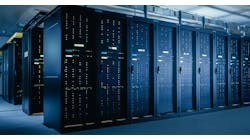AEP: 15 GW of New Data Center Capacity Growth Committed through 2030
American Electric Power (AEP) is the latest among U.S. utilities to acknowledge that coming data center growth is challenging the traditional power grid dynamic in historic ways.
During its second-quarter earnings webcast this morning, AEP Interim CEO Ben Fowke told analysts that the utility has 15 GW of new and incremental load commitment from incoming data center customers through the end of this decade. To put it in perspective, Fowke noted, AEP’s entire systemwide peak load was 35 GW at the end of 2023.
MGK Coverage of Microgrids for Data, Cloud and AI
Brain Trust: Microgrid Sector Thinking Through Demand Crisis
How Power-Hungry Data Centers & Large Industries Are Turning to Microgrids
In other words, near-term and committed data center load growth in the AEP service territories would raise its load profile by more than 40% in six years. Most of the newly committed data center customers will be located in Ohio and Texas, company leaders noted.
“These are far from just inquiries: These are serious customers that want to get on the grid and are willing to financially commit to doing what it takes to get on the grid,” Fowkes said during the earnings call with analysts and media. “This is more growth than maybe we’ve seen in a generation.”
The data center industry, utilities and other energy partners are accelerating consideration of microgrids and other means of power generation to meet the exponential expansion of cloud-based capacity and artificial intelligence in coming years. Virginia-based Dominion Energy, for one, expects to connect some 15 new data centers into its system this year, representing close to 1 GW of load addition just within its service territory, according to its 2023 annual report.
These interconnections are complicated, time consuming and expensive. AEP expects to invest about $43 billion in capital projects through 2028, including some $9 billion of that, or 22%, allocated for renewable energy within its regulated businesses. The rest is divided among transmission, distribution and generation investment.
New transmission, generation and distribution projects will involve new tariffs and rate structures, which could impact all customers. The data centers under commitment, however, have signed letters of agreement in which they help pay for preliminary work on the power delivery projects.
“We continue to work with our data center customers to meet their increased demand,” the company said. “In the fall, we will provide an update on what the large load opportunities do to the capital spend.”
AEP and Exelon have filed a challenge with the Federal Energy Regulatory Commission to challenge a Pennsylvania data center agreement which is co-locating a planned Amazon Web Services site (developed by Cumulus) and directly connecting it with the Susquehanna, Penn., nuclear power plant. The AEP-Exelon challenge alleges the Cumulus-AWS agreement places an unfair cost on ratepayers.
In addition to the data center load growth in its Ohio and Texas territories, AEP also expects to finalize new or modified tariffs for future data center interconnection projects in Ohio, Indiana and West Virginia, the company said.
AEP has been working on microgrid projects for 10 years. In 2023, it contracted power management firm Eaton to deliver a solar-storage microgrid for the city of Colombus, Ohio’s Tussing Water Booster Station.
Join MGK at the Data Center Frontier Trends Summit








